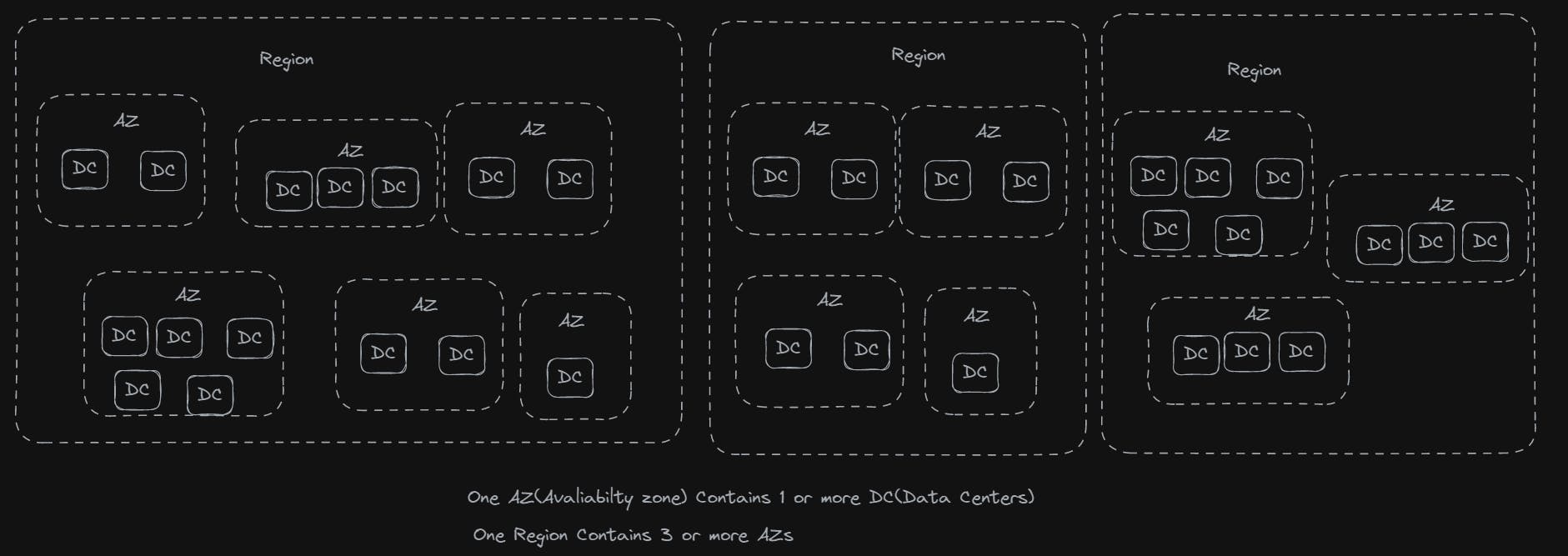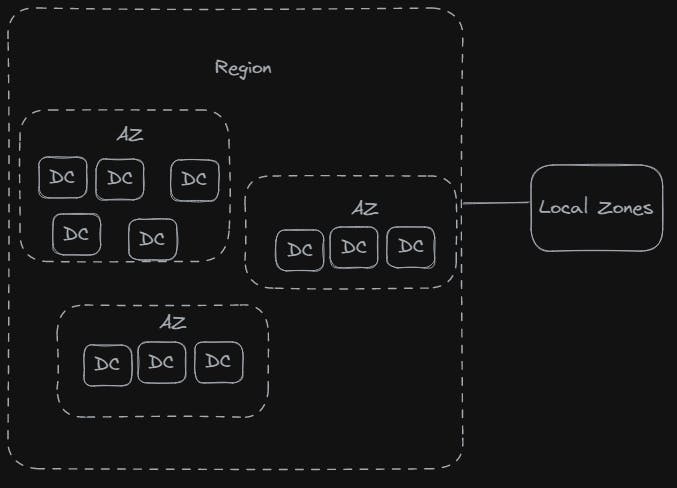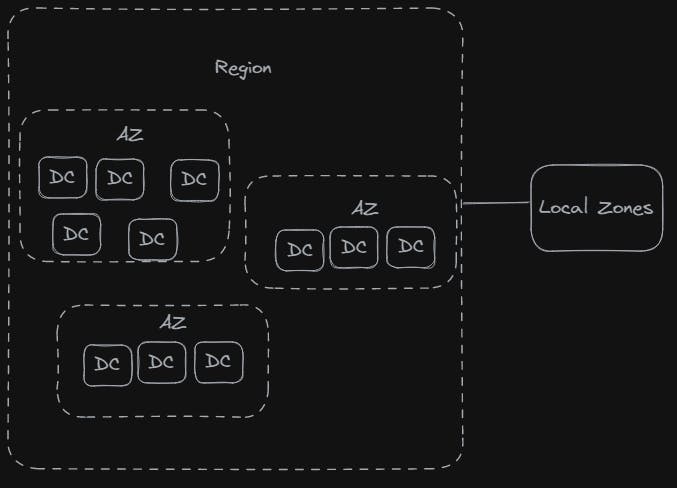AWS Global Infrastructure Explained

Regions (Currently 31 with announced plans for 5 more)

AWS has the concept of a Region, which is a physical location around the world where AWS has clustered a set of Availability Zones (AZs) in a geographic area. Each Region has a minimum of three, isolated, and physically separate AZs. All AZs in an AWS Region are interconnected with high-bandwidth, low-latency networking, over fully redundant, dedicated metro fibre providing high-throughput,low-latency encrypted networking between each other in that region.
Unlike other providers can often define a region as a single data centre. AWS allows for the design of some applications to run in multiple AZs to achieve even greater fault tolerance. The infrastructure in the region has a high level of security, compliance, and data protection.
AWS opens new Regions rapidly. AWS maintains multiple geographic Regions in North America, South America, Europe, China, Asia Pacific, South Africa, and the Middle East.
Availability Zone (Currently 99 with announced plans for 15 more)
An Availability Zone (AZ) is at least one or more complete data centres that each has:
Redundant power,
Networking and
Connectivity in an AWS Region.
A group of logical data centres is called an Availability Zone (AZ).
The AZ has:
independent power,
cooling,
physical security and
is connected via redundant, ultra-low-latency networks.
AZs are more highly available (uptime), fault-tolerant (can handle failures), and scalable (meet changes in demand) than would be possible from a single data centre.
All AZs in the same Region are connected with a network performance that is sufficient to accomplish synchronous replication between these AZs. AZs make partitioning applications for high availability easy. If an application is partitioned across AZs allow for redundancy between AZs. AZs are physically separated by a meaningful distance but within 100km of each other.
Data Centers
This is where the actual infrastructure is stored and operated. They are equipped with redundant power, networking, and connectivity. AWS intentionally avoids disclosing their locations for security reasons. AWS customers are not able to select specific Data Centers for their services and often choose either an AZ or Region depending on the services.
Local Zones

AWS Local Zones place compute, storage, database, and other select AWS services closer to end-users. The aim is to allow highly-demanding applications that require single-digit millisecond latencies for end-users such as media & entertainment content creation, real-time gaming, reservoir simulations, electronic design automation, and machine learning.
Each AWS Local Zone location is an extension of an AWS Region where you can run your latency-sensitive applications using AWS services such as Amazon Elastic Compute Cloud, Amazon Virtual Private Cloud, Amazon Elastic Block Store, Amazon File Storage, and Amazon Elastic Load Balancing in geographic proximity to end-users. AWS Local Zones provide a high-bandwidth, secure connection between local workloads and those running in the AWS Region, allowing you to seamlessly connect to the full range of in-region services through the same APIs and toolsets.
Edge Locations (Currently 400+)
Edge locations are AWS data centres that act as endpoints (deliver services with the lowest latency possible) due to the choices to select. They’re closer to users than Regions or Availability Zones, often in major cities, so responses can be fast and snappy. They often serve as hosts for static and dynamic websites (CloudFront, S3).
Outposts

AWS Outposts bring native AWS services, infrastructure, and operating models to virtually any data centre, co-location space, or on-premises facility. You can use the same AWS APIs, tools, and infrastructure across on-premises and the AWS cloud to deliver a truly consistent hybrid experience.
AWS Outposts is designed for connected environments and can be used to support workloads that need to remain on-premises due to low latency or local data processing needs. When the outpost is install a service link connection is established to connect the outpost to the chosen AWS Region.